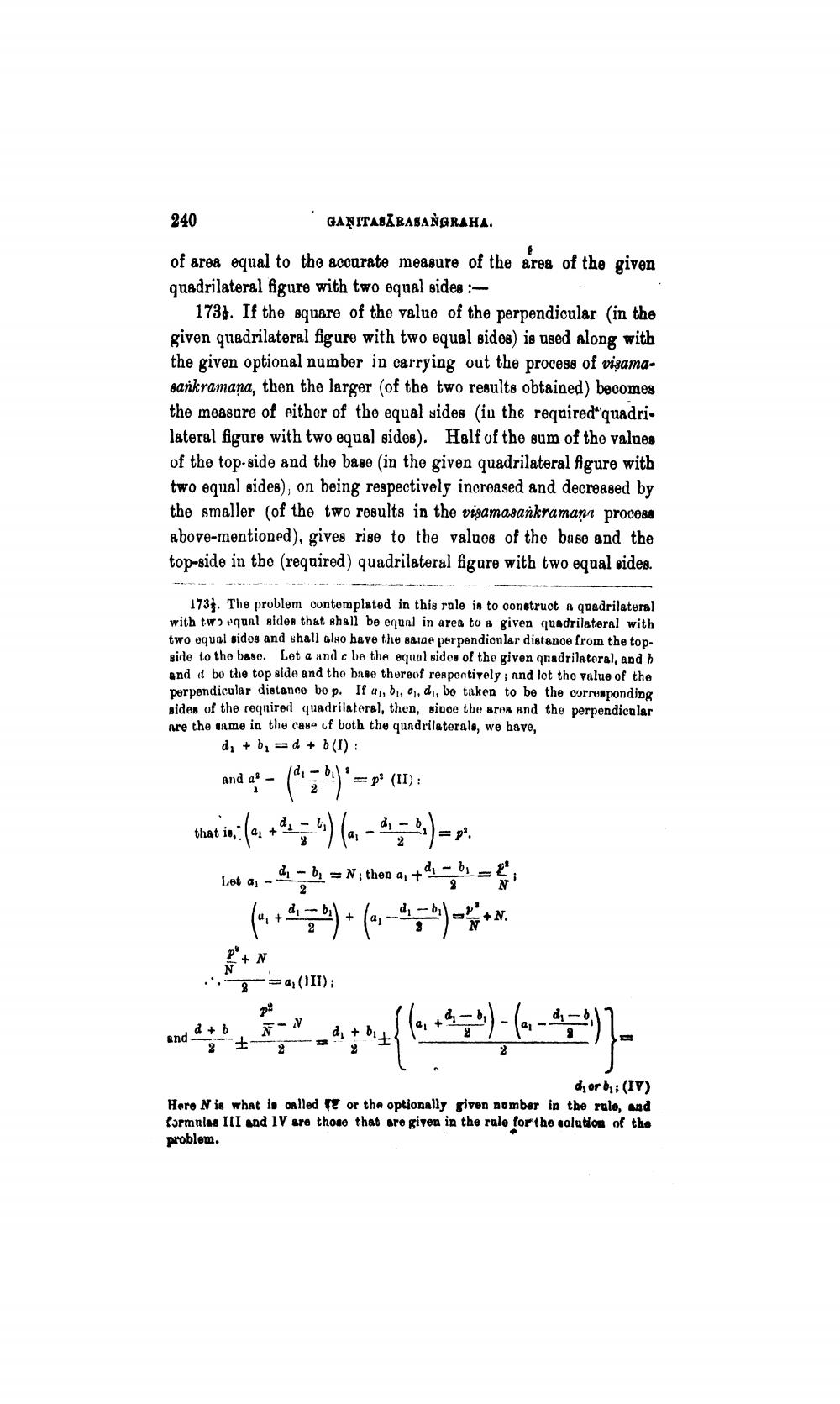________________
240
GANITASABASANGRAHA.
@
of area equal to the accurate measure of the area of the given quadrilateral figure with two equal sides :
173. If the square of the value of the perpendicular (in the given quadrilateral figure with two equal sides) is used along with the given optional number in carrying out the process of visamasankramaņa, then the larger (of the two results obtained) becomes the measure of either of the equal sides (in the required quadri lateral figure with two equal sides). Half of the sum of the values of the top-side and the base (in the given quadrilateral figure with two equal sides), on being respectively increased and decreased by the smaller (of the two results in the visamasankraman process above-mentioned), gives rise to the values of the base and the top-side in the (required) quadrilateral figure with two equal sides.
173. The problem contemplated in this rule is to construct a quadrilateral with two equal sides that shall be equal in area to a given quadrilateral with. two equal sides and shall also have the same perpendicular distance from the topside to the base. Let a and c be the equal sides of the given quadrilateral, and b and d be the top side and the base thereof respectively; and let the value of the perpendicular distance be p. If a, b, o, di, bo taken to be the corresponding sides of the required quadrilateral, then, since the area and the perpendicular are the same in the case of both the quadrilaterals, we have,
d2 + b1 = d + b (I):
and
and q2 - (di = b1) *
-
= p2 (II):
that is, (4, +52
d1 = b1 = 2;
2
2
Let a db N; then a, + - di ; bi = (~ + d) (~,~-~~-~1) - N
11.
+N.
b +
(1) (a, – d2 = 1) = 3.
2
pl N-N
2
+
(III);
- - |( ~ (
d1 + b1
+
2
1
a, +
1-01
) ( ) (
d, or b1; (IV)
Here N is what is called
or the optionally given number in the rule, and formulas III and IV are those that are given in the rule for the solution of the problem.




